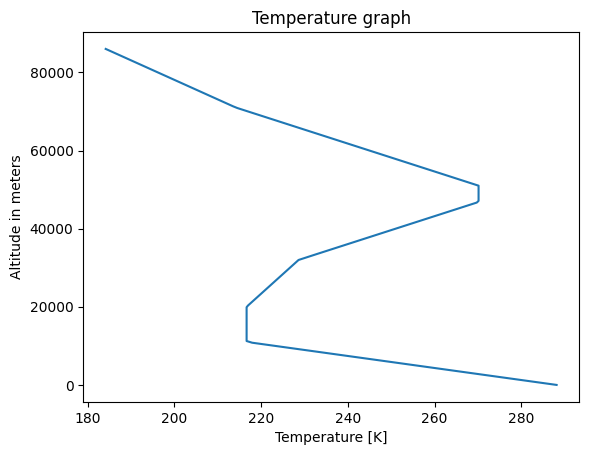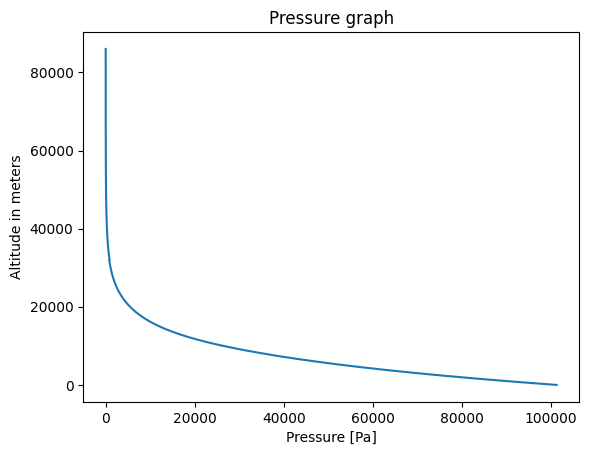Atmosphere module#
This module defines several atmosphere models to compute density, pressure, temperature and other useful quantities at the altitude of interest for the other modules. Here is the list of the atmosphere models implemented:
Constant atmosphere
Linear atmosphere
Standard atmosphere
Constant atmosphere#
This is a debug atmosphere model. The density is considered constant equal to the sea level at any altitude.
Linear atmosphere#
This is a simple atmospheric model that is mostly used to compute air density. The atmospheric model used is a simplification of the standard atmosphere and it is valid between 0 and 11km of altitude.
Physical background#
The model is based here on a single formula:
with:
Examples#
The functions allow to compute the density:
>>> compute_sigma_from_altitude(4.2e3)
0.6528925619834711
or directly the mass per cubic meter:
>>> compute_density_from_altitude(3e3)
0.9054347826086957
For a given sigma, it is also possible to compute the altitude:
>>> compute_altitude_from_sigma(0.7891)
2357.609971494047
Standard atmosphere#
This is the International Standard Atmosphere model and it allows to compute the following quantities:
temperature
pressure
density
sound speed
dynamic viscosity
kinematic viscosity
Physical background#
Here is the list of hypotheses of the model:
The air is considered to be a perfect gas with \(r = 287 J.kg^{-1}.K\).
The air is dry.
The gravity force is uniform.
The atmosphere is at equilibrium. Therefore \(dp = -\rho g_0 dh\)
The temperature changes with altitude following a table defined in the
US Standard Atmosphere NASA definition from 1976.
The formulas of the other quantities directly derive from theses hypotheses.
Graphs#
Here is an overview of the temperature and pressure evolutions.



